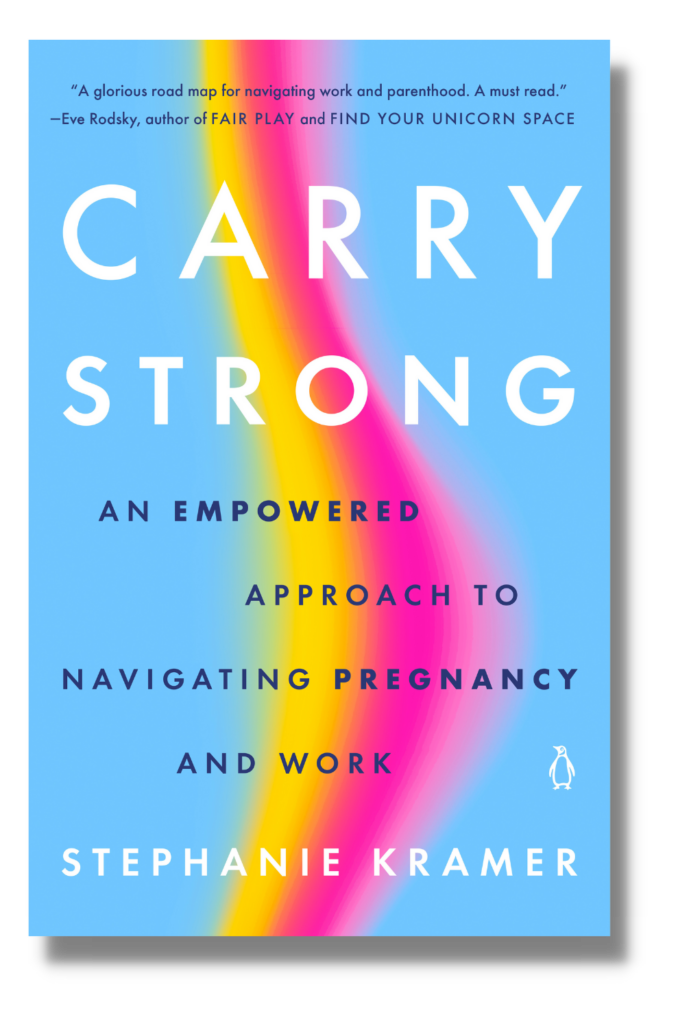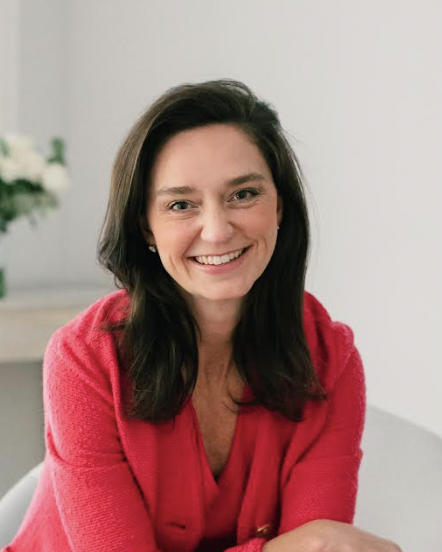According to my third study, “work-life balance” is a term that 84 percent of people with and without children use, and it is quite polarizing. To be honest, I don’t really like this term. Don’t get me wrong, I like balanced views to make my decisions, to have a balanced diet somewhere between green juice and donuts, and I even run in New Balances. But work-life balance needs a reframe, especially when navigating pregnancy at work.
Think about when you have been off-balance or have tried hard to be balanced physically. Even if you can do a perfect handstand, balance takes practice. If you have ever tried to change into heels on a city sidewalk without holding on to a wall, you get it. Balance takes a lot of effort.
I want you to visualize a seesaw. If that seesaw has “work” on one end and “life” on the other, and your expectation is to keep those legs off the ground in an uncomfortable and unrealistic position, the balance is tenuous. Plus, you are giving a hell of a lot of credit to “work” to measure up to everything else that is “life.”
In reflecting on “work- life balance,” I found a way to think about it that sets me free. Instead of a work-life-balance seesaw with “work” on one end and “life” on the other, imagine a sliding scale. The idea is that different roles take priority at different times. Instead of a balance on a seesaw, I can slide along in my day from different dimensions of priority in the same plane. For example, it could be a full day or even a week when I could slide in the direction of my job, prioritizing it one day, or even one week, and devote my energy and focus to that area of my life. That doesn’t mean that I am out of balance. It just means that on that day, I am consciously sliding in that direction. Other times, I can slide in different directions within the hour—I am going to take this call with focus for one minute, but then I am 100 percent finding a Band-Aid or making a Play-Doh snake. While it’s not ideal to get out of “the flow” of work when you’re in it, it also means that there are moments when you can slide your energy, output, and responsibility where it’s needed. The other things don’t disappear; they are there, waiting for you to slide into them with intentionality.
I call this “work- life fluidity,” and I prefer it to “work- life harmony,” “work- life integration,” or several other attempts to name this concept, because they don’t account for movement. The idea of fluidity allows us to recognize that work and motherhood, though incredibly important, are only two of our many dimensions. Imaging the sliding scale instead of the seesaw releases us from the expectation that we can be in two places (or more) at once. It allows us to focus our efforts on the task at hand, to choose what’s important, and to not constantly be disappointed about the lack of balance. Instead, we can recognize that we’re where we need to be right now.
Embracing work-life fluidity is also about real flexibility. Figuring this out now means that you put less pressure on yourself as you’re about to add another variable of pregnancy and ultimately motherhood,
and it also gives you a way to make your energy work for you. Remember you have the power to maneuver time, not the amount of it in the day, but the way you use it, including how you free it up, and
recognizing where your energy has value.
A few weeks ago, I was working late at night, and a colleague, also a working mother, pinged me. “Mother’s hours,” she wrote. I pinged back, “Mother’s hours.” While the tone of that “mother’s hours” could have been read with a sigh, the relief I feel to have those hours has been a game changer. Instead of thinking about these late nights as “working once they go to sleep,” I think about it as having the type of energy my sons need from me when they are awake, but also having my quiet flow of emails I enjoy at night without any distraction, family, work, or otherwise.
For me work-life fluidity was a mindset shift to remove frustration where my energy wasn’t. I have boundaries, but because it’s a sliding scale from work to life, those margins where life and work collide
are graceful. Instead of being frustrated that I’m working late at night, I enjoy it because I enjoy my time-focused evenings with my boys or getting a workout in even more. I still have a traditional schedule dictated by the demands of my job, but in the margins, the ones that I define and actively create, I set myself up for more balance than I had when I was constantly chasing it.
I encourage you to recognize that what you need in different moments, and even on different days, might change. My schedule is different now than when my sons were younger, and I’m sure it will continue to evolve as they get older. It’s different when I am writing a book, teaching for the semester, or training for a half-marathon on top of my day job. But I organize and assess them, along with who and what I need for support—and how the kitchen might just have to stay a mess, in service of “achieving it all,” just not all at once.
Recently I was in a meeting regarding the future of the workplace, one with more flexibility. One of the key topics being debated was whether in a hybrid environment people would have more balance or less. One participant reflected, in a semi-Newtonian statement, “Motion is a series of unbalanced movements.” Unbalance is what keeps us going, creating complexity to navigate, but also growth. This leads us to the next consideration for you to find your balance: accessing where you are and where you want to go, and making sure that, even like the seesaw, there is motion—that you aren’t stuck.



